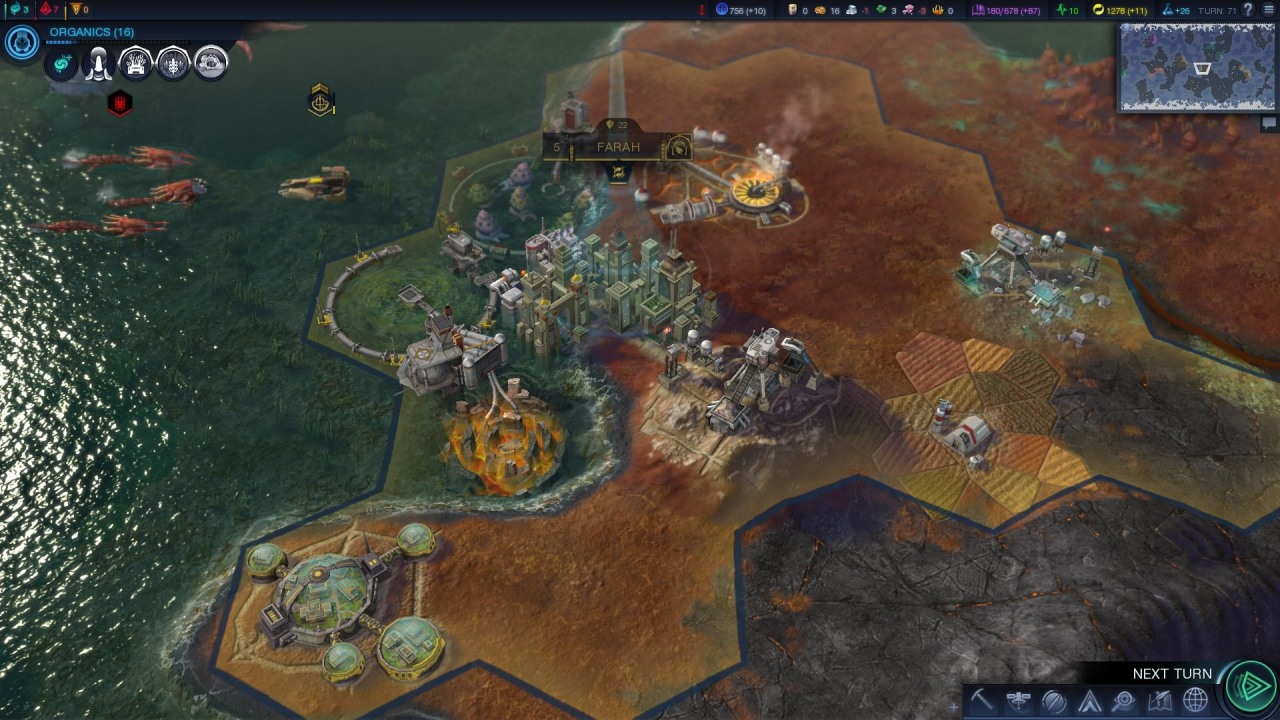
Using a new resource called Political Capital (generated by new civic buildings), you’ll be able to purchase deals from other civs that can net you significant bonuses. Agreements are a big part of diplomacy in Rising Tide.

Respect is all about shared alignments in affinity, whether you react to their requests (based on their personality) and whether you keep your word in agreements. Fear is based purely off of your civ’s power rating – if you’re ranked above them, they’ll fear you if they rank above you, they won’t. Now, your relationship with other colonies is displayed with two numbers: fear, and respect.

It’s no longer about swapping strategic resources for favors - all that’s been moved to the trade system. The other big new feature is diplomacy, which has gotten a complete overhaul from Beyond Earth’s originally Civ 5-like system. That can allow you to expand your colonies faster with fewer drawbacks. Water cities don’t produce land units as quickly as a land-based city does – it’s a difference of a few turns – but they don’t have as much of an impact on your civ’s health, either. When I expanded by founding a second floating colony, I felt a couple of differences in play. (Each biome will have its own Marvel Quest, such as the Fungal biome and its food-boosting Marvel.) There’s also a new Artifacts system, where Explorer excavations have a chance to yield trading card-like items that can be cashed in for an immediate resource reward, or saved up and redeemed three at a time for a greater bounty. If you find a huge Hydrachoral, then locate and excavate several nodes, you’ll gain vision around all Hydrachorals on the map. Meanwhile, you’ll find a ton of sunken treasures out here, so exploration remains every bit as important as it is on land – especially when you’re searching the globe for the new multi-stage Marvel Quests, which are triggered by major map discoveries. There’s just Hydrachoral, which is the seaborne equivalent of alien nests, and the aquatic (and amphibious) aliens they spawn to avoid. It’s all very direct, point-to-point travel, and the ocean map is exposed pretty quickly. Water units move faster to begin with, and there are no obstructions like mountains or miasma to navigate around. Tactically, playing a water-focused faction makes Beyond Earth feel very different. This new mobility opens up some interesting strategic options, like boxing another civ in, or using a city offensively against a coastal enemy. Notably, one of the NSA’s bonuses makes them extra fast at this, so I was able to move my capital city fairly quickly.

(You can also buy hexes the same way you do on land.) The movement option appears at the top of the production menu, and takes a few turns to complete, but you can cover a reasonably large area in a short amount of time. Instead, they control just the hexes immediately adjoining the colony, but can “paint” their influence across the map by physically moving the entire colony. Setting out on my life aquatic, I found that seaborne cities don’t gain territory the same way land-based cities do. However, in this game I played aggressively toward the Purity side, which meant taking on alien sea monsters at every opportunity. At last, there’s a way to harness them as a resource instead of simply eradicating them as soon as possible. Plus, the Harmony Affinity now allows you to unlock the ability to “leash” an alien unit (first the small ones, but eventually the large ones like Siege Worms or Krakens) and turn them against your enemies - though at a cost to your Explorer unit’s health. You’ll also find that you can no longer hide behind the Ultrasonic Fence forever - get aliens angry enough, and they’ll walk right though your protected territory. While they’re still largely obstructions to your colonization of your new home, the variations in their actions gives them a little more variety in how you’ll want to approach them. We’ll see the aliens behave differently on each biome now - for instance, they might be prone to mood swings, making them quick to anger and quick to forgive. This game was on a planet generated using the new Frigid biome, where the aliens spawn slowly, but spawn with more hitpoints.


 0 kommentar(er)
0 kommentar(er)
